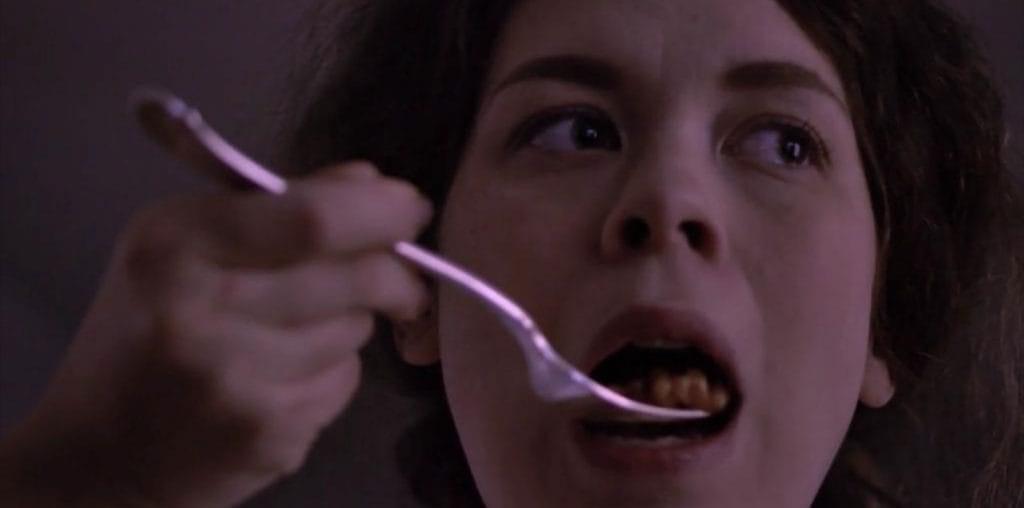
BOOTLEG FILES 547: “Too Much Johnson” (1938 unfinished film directed by Orson Welles).
LAST SEEN: It is on the National Film Preservation Foundation and Fandor websites.
AMERICAN HOME VIDEO: None.
REASON FOR BOOTLEG STATUS: An honest error in regard to clearing the film rights to the underlying property.
CHANCES OF SEEING A COMMERCIAL DVD RELEASE: Excellent.

This week, The Bootleg Files is different because we are not focusing on an elusive title that cannot be experienced in commercial home entertainment release. Instead, we are looking at a mysterious film that was never exhibited due to an accidental case of copyright violation and was believed to have been lost for decades. However, it has miraculously surfaced intact and can now be freely seen online.
Among many film scholars, “Too Much Johnson” was something of a holy grail. Directed by Orson Welles three years before he made “Citizen Kane,” it was believed that the film was irretrievably lost – Welles stated the sole copy of this work was destroyed in 1970 in a fire at his home in Spain. But in 2008, 23 years after Welles’ death, a miracle occurred: a surviving workprint of “Too Much Johnson” was located in a shipping company warehouse in the Italian city of Pordenone. How the film got there has never been fully determined – either Welles was unaware of its existence or he intentionally lied about having no surviving copies of the work – but the discovery was kept secret until last year when the George Eastman House in Rochester, N.Y., announced to a stunned film world that it completed the restoration of “Too Much Johnson” and was ready to share it with movie lovers.
“Too Much Johnson” was never intended as a standalone film. Instead, the footage was meant to be divided into three parts that would serve as cinematic prologue to the three acts of a Mercury Theatre production of the William Gillette farce “Too Much Johnson” that Welles was preparing to bring to Broadway. Mixing film and live theater was not something new, but Welles took this a broad extreme with the depth and the audacity of his filmed material.
Although Gillette wrote and first staged “Too Much Johnson” in 1894, Welles saw the property’s focus on the wild misadventures of a serial philanderer to be ideal for the slapstick mayhem of the 1910s-1920s silent movies. He envisioned the footage to mirror the exaggerated tumult and zany physical humor that one associated with Mack Sennett, and he was especially eager to emulate the daring stunt feats that Harold Lloyd perfected in “Safety Last!” There would be no need for dialogue here – Welles kept Gillette’s basic plot but jettisoned the original dialogue in favor of visual comedy.
Welles scholar Joseph McBride states that there were reportedly four-and-a-half hours of footage shot for “Too Much Johnson,” though the surviving workprint runs 66 minutes. The surviving footage has a fairly large number of performers in period clothing and vehicles – segments included a parade for women’s suffrage and a third act location switch to Cuba, all of which were shot on locations around New York City. The elaborate nature of this is quite surprising, considering that Welles was working on a shoestring budget to stage his interpretation of Gillette’s work. (McBride claims that Welles had only $10,000 to produce the stage show and the filmed prologues.) The fact that Welles did not pay his cast for their film acting (a decision that would not sit well with the cast) may explain how he was able to save money on this endeavor.
Welles made some effort to edit his footage together, but at one point he abruptly stopped and decided to shelve the filmed prologues. When “Too Much Johnson” was staged without the film footage in a pre-Broadway run at a small theater in Connecticut, the reaction was so poor that Welles cancelled his plans to bring the show to Broadway. The footage was quietly put away, to be forgotten and then lost.
Why did Welles pull the plug on this project? It seems he made an honest but devastating mistake: he licensed the stage rights to Gillette’s play only, and was unaware that he needed to clear the film rights to the property if he wanted to put it on camera. Paramount Pictures owned the film rights to “Too Much Johnson” and had already made a 1920 version of the work. (That film, directed by Donald Crisp, is now considered lost.) Paramount’s legal team got wind of Welles’ activity via the press coverage of his efforts in shooting “Too Much Johnson” on New York City’s streets and informed him that he could not make a film of “Too Much Johnson” without their permission. Lacking the funds to buy the rights from Paramount, Welles found it easier to walk away from his work.
“Too Much Johnson” can now be seen for free on the National Film Preservation Foundation website and on the Fandor site, both in the restored workprint and in an abbreviated version edited by film scholar Scott Simmon that approximates what Welles may have intended if he finished the work. (Welles left behind no notes on his plans, so Simmon’s work is an educated guess.)
I approached this footage with apprehension, knowing too well that many long-lost films have a tendency to disappoint the viewer once they are finally screened – their power is in their absence, not in any predetermined confirmation of their greatness. In a way, my fears were justified – Welles, at that early point in his career, lacked the skill and style to pull off broad Sennett-style slapstick romp. Indeed, one prolonged sequence involving a chase in a warehouse full of barrels is staged in such a slovenly manner that it is hard to imagine anyone would have found it amusing. It also didn’t help that Joseph Cotten, as the philandering anti-hero, went through his footage with the same dull expression, as if he was indifferent to the chaos being created in his wake. And while some critics have marveled at watching Cotten run about in the manner of Harold Lloyd across the rooftops and terraces of lower Manhattan, Welles did not film this action in a manner that was even vaguely funny – the excitement in watching this today is to view the pre-World War II New York landscape, rather than to thrill to the comedy chase.
But, on the other hand, “Too Much Johnson” has enough to keep today’s movie lovers intrigued. One scene with Cotten and a young Arlene Francis (as a married woman with whom he is having an affair) lying horizontally on a bed would have created a major shock to viewers back in 1938, given the Production Code’s strict rules regarding the on-screen depiction of sex. One genuinely funny scene, with the angry husband searching for Cotten by pulling the hats off every male pedestrian, is wonderfully staged. And some fun can be found in spotting Welles’ distinguished creative partner John Houseman as a beleaguered Keystone Kop and a then-unknown Mary Wickes as Cotten’s sassy mother-in-law.
Welles once commented that watching the “Too Much Johnson” footage would make little sense outside of the context of the stage show. He was correct. One can easily imagine what Welles was aiming to achieve with this bold effort, but the absence of the full context of the Gillette work makes much of the film footage seem like a disconnected curio. Still, any Welles work has its merits, and the fact this was located after being considered gone forever is enough for us to be grateful that we can finally appreciate another aspect of Welles’ remarkable output.
IMPORTANT NOTICE: The unauthorized duplication and distribution of copyright-protected material, either for crass commercial purposes or profit-free s***s and giggles, is not something that the entertainment industry appreciates. On occasion, law enforcement personnel boost their arrest quotas by collaring cheery cinephiles engaged in such activities. So if you are going to copy and distribute bootleg material, a word to the wise: don’t get caught. Oddly, the purchase and ownership of bootleg DVDs is perfectly legal. Go figure!

